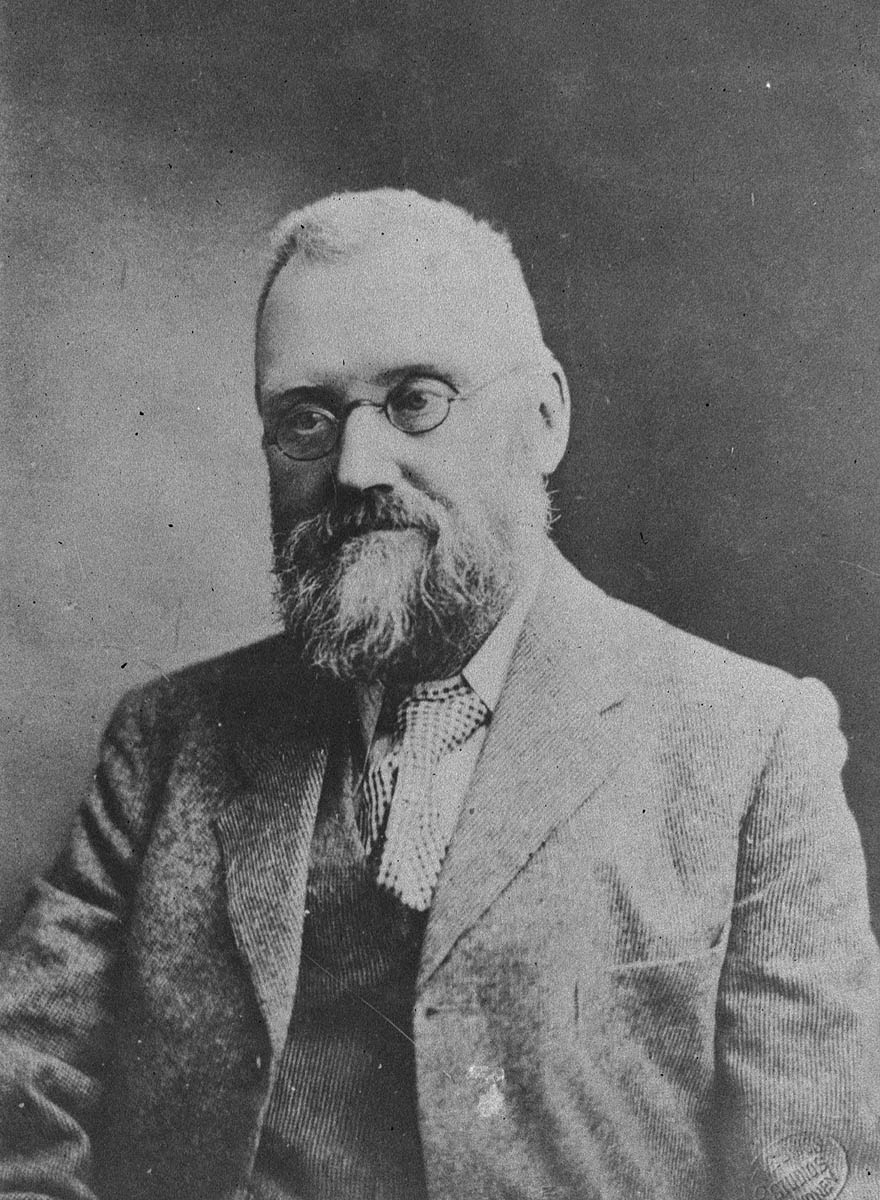- William Farrer
Infobox Scientist
name = PAGENAME
box_width =
image_width =150px
caption = PAGENAME
birth_date =3 April 1845
birth_place = Docker,Westmorland
death_date =16 April 1906
death_place =
residence =
citizenship =
nationality =
ethnicity =
field =agronomy
work_institutions =
alma_mater =
doctoral_advisor =
doctoral_students =
known_for =
author_abbrev_bot =
author_abbrev_zoo =
influences =
influenced =
prizes =
religion =
footnotes =
William James Farrer (3 April 1845 –16 April 1906 )cite web |url=http://www.adb.online.anu.edu.au/biogs/A080498b.htm |title=Farrer, William James (1845 - 1906) |accessdate=2007-12-30 |author=C. W. Wrigley|work=Australian Dictionary of Biography , Volume 8 |publisher=MUP |year=1981 |pages=pp 471-473] was a leadingAustralia nagronomist andwheat breeder .Farrer is best known for developing the "Federation" breed of wheat, distributed in 1903. His work led to significant increases in the Australian wheat crop for decades to come, and economic prosperity for the wheat industry.
Early years
Farrer was born at Docker,
Westmorland in the English north west (nowCumbria ), the son of Thomas Farrer, a tenant farmer, and Sarah. He was awarded a scholarship toChrist's Hospital ,London where he won a gold and silver medal for mathematics. After education atPembroke College, Cambridge , where obtained a B.A. in 1868, heemigrate d to Australia in 1870. He did this for health reasons - he had been diagnosed as havingtuberculosis . Australia's climate was more suited for his condition, and he had friends at Parramatta, inSydney , with whom he could stay.Initially, Farrer lived with his friends but then moved to the country, working as a tutor. In 1873 he published "Grass and Sheep-farming A Paper: Speculative and Suggestive" which dealt with the suitability of various soils for grasses and the scientific side of sheep-farmingcite web |title=Farrer, William|work=
Dictionary of Australian Biography |url=http://gutenberg.net.au/dictbiog/0-dict-biogF.html#farrer1 |editor=Percival Serle |publisher= Angus and Robertson |year=1949] . After working as a tutor on George Campbell's sheep station at Duntroon,New South Wales (now part of theAustralian Capital Territory ), he qualified as a surveyor in 1875. Farrer worked for the Department of Lands in wheat growing districts of NSW from 1875–1886. During this period, in 1882, he married Nina de Salis, a member of one of the families that lived in what is now the Australian Capital Territory region.Lambrigg experiments
In 1886 Farrer bought a property on the
Murrumbidgee River , "Lambrigg" station, near whereCanberra now stands. Initially, he tried to grow grape vines on his land. However, these failed because the soil was unsuitable and he chose to try again with wheat.There had recently been a series of heavy rains that which resulted in the loss of much of the wheat harvest due to
Wheat leaf rust . Accordingly, he chose to start developing wheat strains by cross-pollination that were immune to this malady. Initially he used hairpins for the pollination until he could obtain forceps. This went on for the next 20 years, and consisted of long says of planting and developing wheat strains, and noting the results in his notebooks. He usedGregor Mendel 's methods in his work.Frederick Bickell Guthrie developed small-scale procedures that emulated a flour-mill and bakehouse; Farrer used these to assess the yield from the wheat strains.As a side project, Farrer also worked on developing a strain of wheat that could resist bunt or smut-ball, another devastating enemy of wheat. His successes led Farrer to become a wheat experimentalist with the NSW Department of Agriculture in 1898.
Farrer combined varieties such as "Professor Blount's Hybrid No.38, Gypsum", Canadian Fife, Etawah and Purple Straw, aiming to use the advantages of each strain. Success in developing a rust-resistant, high-yielding strain greeted him in 1900, when a satisfactory series of wheat was finally obtained - the Federation strain, named after the imminent Federation of Australia.. He then developed a series of other strains such as Canberra, Firbank, Cleveland and Florence (resistant to flag smut).
These wheat strains led to a major improvement to Australia's wheat industry within a few years. The Federation strain became openly available for farmers in 1903. Between 1900 and 1920, Australia's wheat harvest almost trebled because of this.
Death and legacy
Farrer died at "Lambrigg" in 1906 from the effects of a heart attack, and was buried on his property at dusk the next day. His grave was at the top of a rocky hill and had to be blasted out using explosives.
In 1911 the
Farrer Memorial Trust was establish in his memory initially it providing scholarships for Agricultural studies, in 1936 the trust commenced awarding a medal. The medalist gives anoration on any subject of their choice, the first recipient of the medal was thenPrime Minister of Australia andTasmania n farmer,Joseph Lyons . [ [http://www.agric.nsw.gov.au/reader/farrer-memorial-trust/medalists.htm List of Farrer Medalists] ] A statue of Farrer was erected inQueanbeyan by the Federal government in 1935 and another at Lambrigg in 1938.Since then in Canberra a suburb and the primary school were named after him. With the schools logo wheat and the sports houses being named after his most famous types of wheat. Also an Australian electoral division have been named after him. Farrer was also remembered on the reverse of the Australian two dollar banknote issued in 1966 (now withdrawn). A specialist agricultural high school (
Farrer Memorial Agricultural High School , Tamworth NSW) was named in his honour and continues to provide specialist agricultural education.William Farrer is also remembered in Wagga Wagga with the Farrer Hotel and the Farrer Football League (
Australian rules football ).References
Additional sources listed by the "Australian Dictionary of Biography"::A. Russell, "William James Farrer, a Biography" (Melb, 1949), and for bibliography; E. J. Donath, "William Farrer" (Melb, 1970); "Lone Hand", Sept 1910, p 419; Department of Agriculture (New South Wales), "Science Bulletin", 1922, no 22, and for bibliography; RAHSJ, 22 (1936-37), p 406; Australian Institute of Agricultural Science, "Journal", 21 (1939), p 208; "Records of the Australian Academy of Science", 4 (Nov 1978–Apr 79), no 1, p 7, and for bibliography.
Wikimedia Foundation. 2010.
